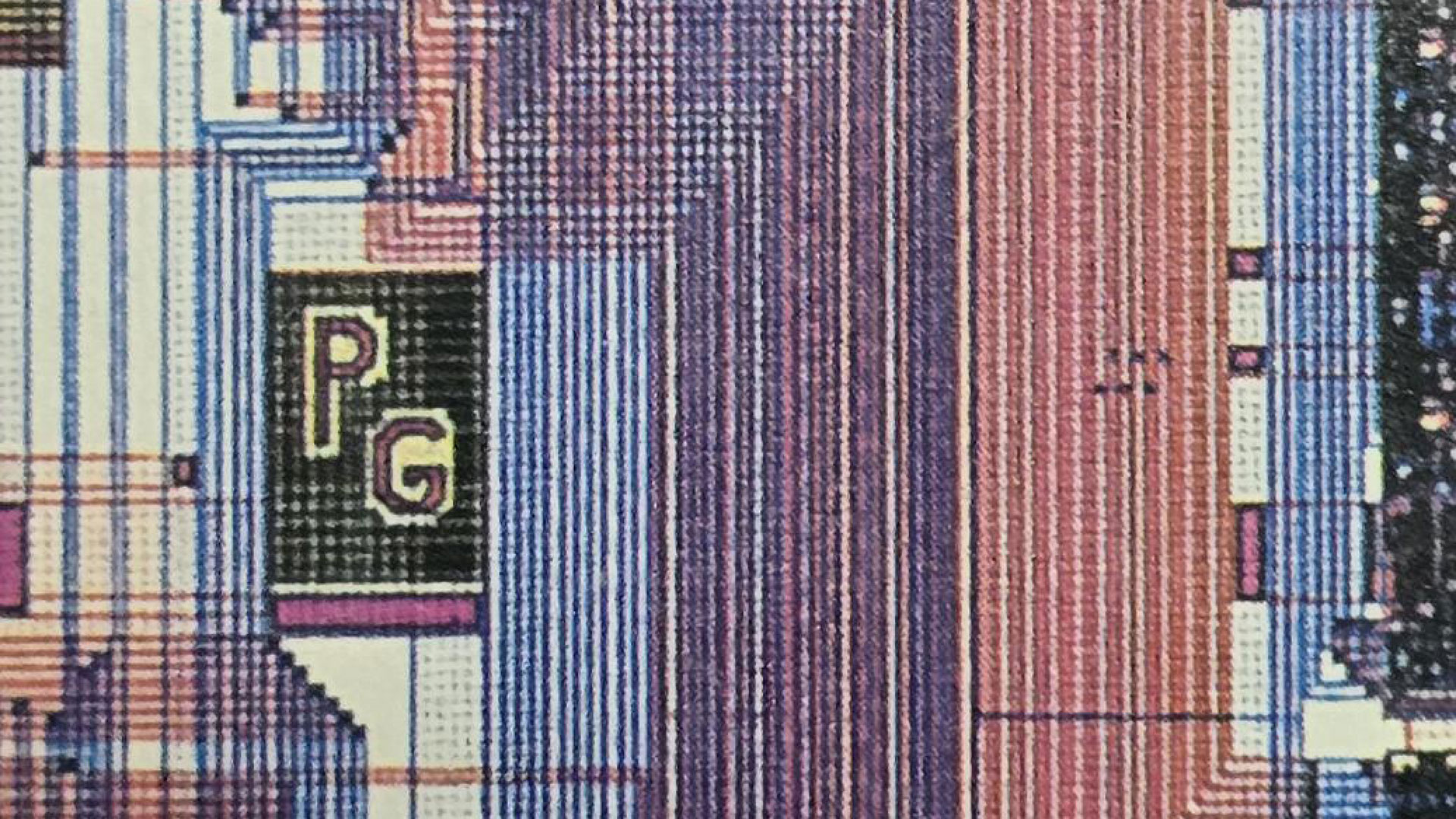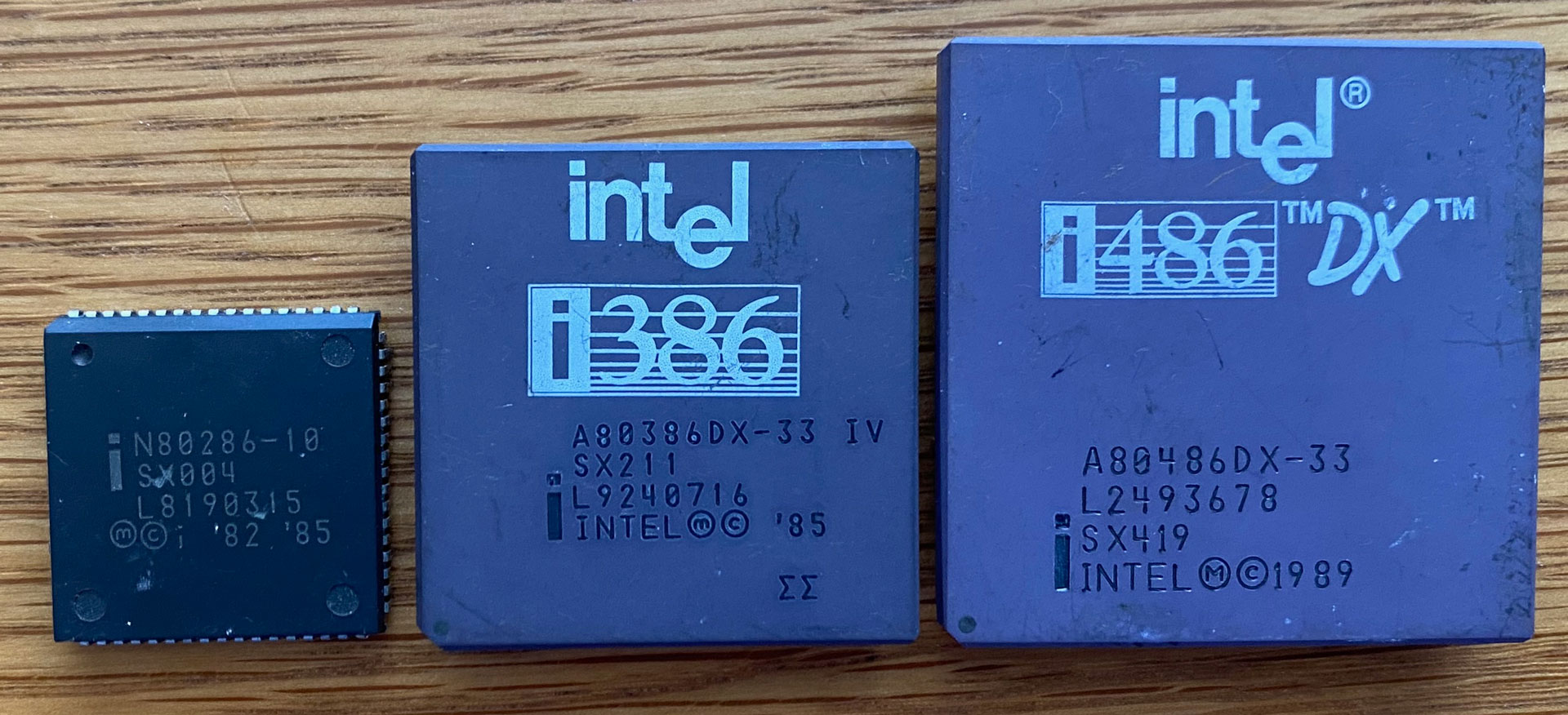Pat Gelsinger explains how his initials ended up etched into every i386 processor ever made — ex-Intel CEO bluffed Andy Grove to keep his mark on the legendary chip’s silicon
Prior to the i386, adding designer initials to the CPU simply ‘was not done,’ at Intel, reveals Gelsinger.

Pat Gelsinger has shared the story of how his initials remained on the Intel 386 silicon die, despite them being spotted by the top brass during a pre-production design review session. Creating such inscriptions "was not done," during this era at Intel, remembers Gelsinger. Nevertheless, the legendary true-blue Intel man says he uttered “some complete nonsense about substrate tap configuration experiments” to swerve a comment on the 'PG' silicon markings by the gruff (then-CEO) Andy Grove. The end result is that Pat Gelsinger's initials are etched directly into the silicon of every 386 processor ever made.
The story goes that Gelsinger and his team of fellow architects and engineers were gathered in a conference room poring over “a huge 25x25 foot printout of the [i386] chip, magnified so we could see every little detail.” This was a part of the design review stage of a chip at the time.
During the review session, the team was excited by the arrival of Grove, invited by the youthful (~25) rising star Gelsinger. However, they grew apprehensive as the Intel CEO du jour took some time to review the detailed printout.
Spotting the famous ‘PG’ initials etched into the chip design, Gelsinger recalls that a gruff Grove grumbled, “What’s this?” People were expecting some kind of outburst or rebuke from the company’s then-leader.
Gelsinger suggests he quickly took the bull by the horns, and “responded with some complete nonsense about substrate tap configuration experiments for the optimal leakage current collection effectiveness (said in a tense but convincing tone).”
Gelsinger admits his response was “total BS.” He got the impression that witnesses to this verbal/technical joust were thinking “Pat’s dead!” due to Grove’s then-legendary temper. However, the then-CEO apparently just said “OK,” seemingly swallowing the explanation whole.
Thus, Gelsinger’s personal stamp of chip architect authorship remained on the i386, despite being a blithe ~25-year-old at the time. Subsequently, his initials were also on the i486 silicon. On the more advanced chip, you will see PG, again, as well as JR. The latter is short for ‘Johnny Reb, ’ fellow chip architect John H. Crawford’s nickname.
Get Tom's Hardware's best news and in-depth reviews, straight to your inbox.
Grove’s perspective, Gelsinger's travels
Did the explanation about the substrate tap configuration experiments wash with Grove, or was he simply being lenient with a clearly budding talent at Intel? We can only guess about that aspect of this story.
Holocaust survivor Andy Grove passed away in March 2016. He is remembered for being one of the first three employees of Intel, alongside founders Gordon Moore and Robert Noyce. Grove also oversaw the rise of the x86 architecture, stewarding the chipmaker from a $4 billion to a $200 billion valuation.
Pat Gelsinger retired from Intel under difficult circumstances but is currently busy helping companies such as xLight, Gloo, Playground Global, and Snowcap Compute.

Mark Tyson is a news editor at Tom's Hardware. He enjoys covering the full breadth of PC tech; from business and semiconductor design to products approaching the edge of reason.
-
logainofhades Replycircadia said:remind me again why this man is sacked, and was his sacking fair?
Board members without a clue, that only cared about moar profit.
